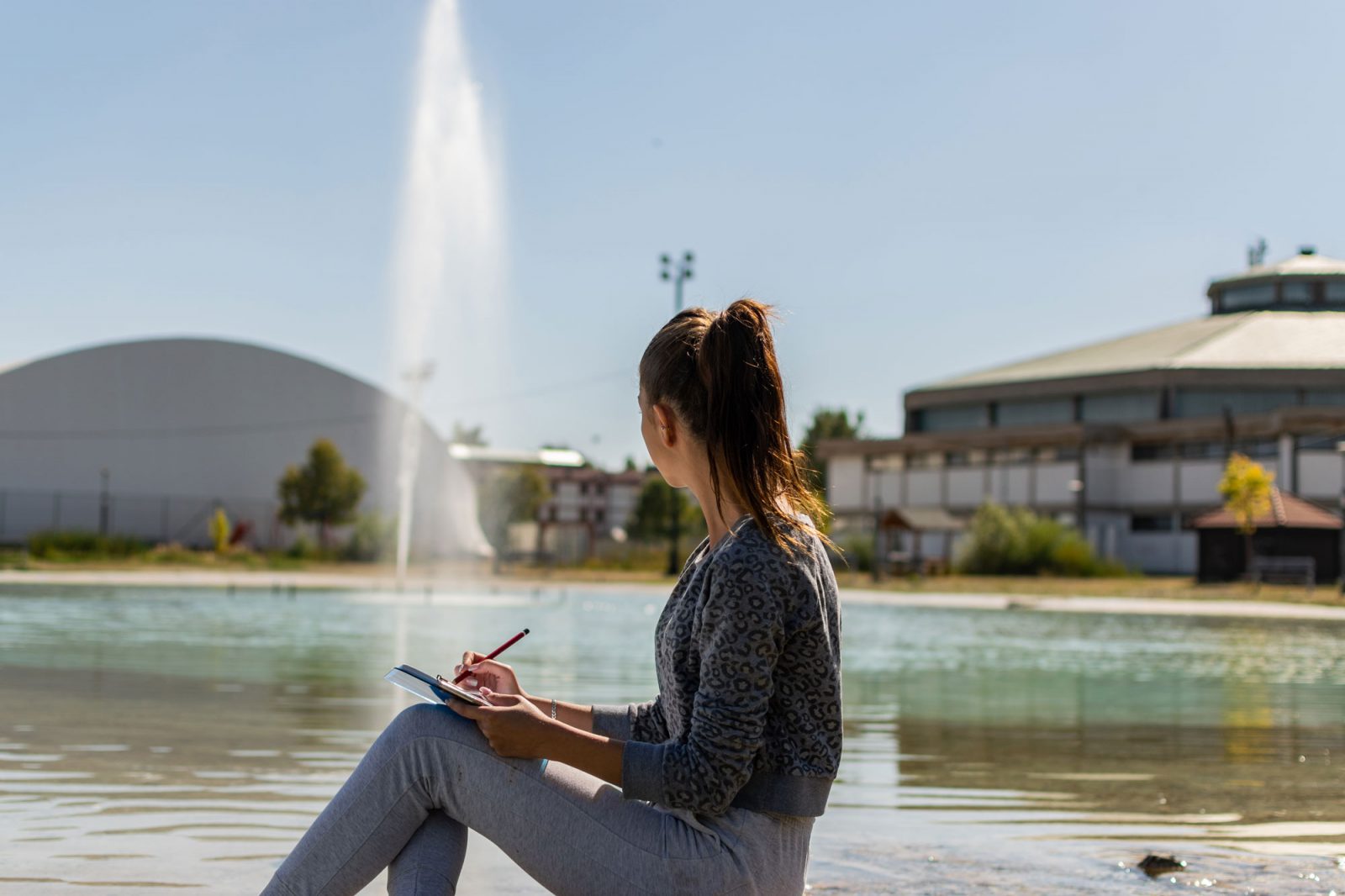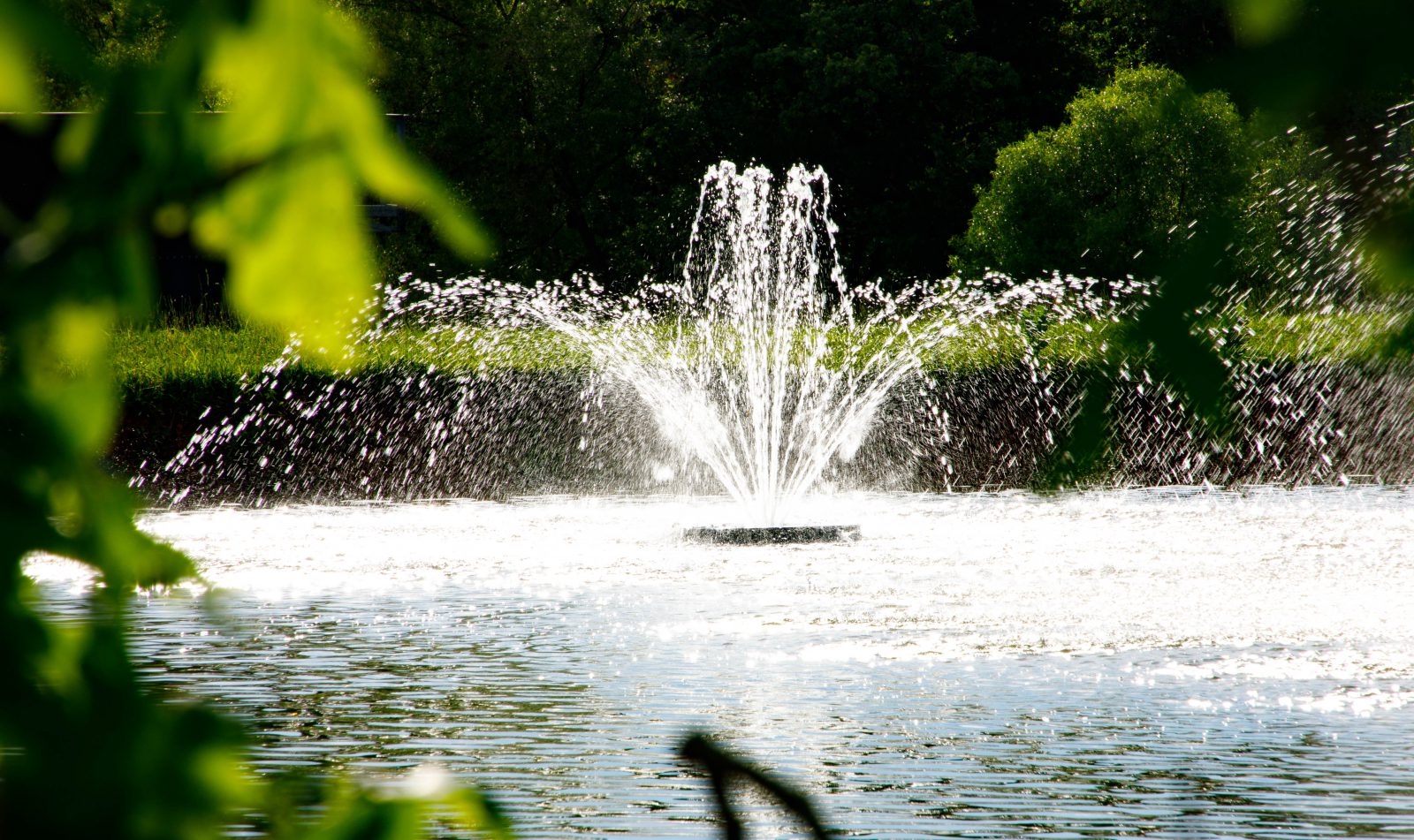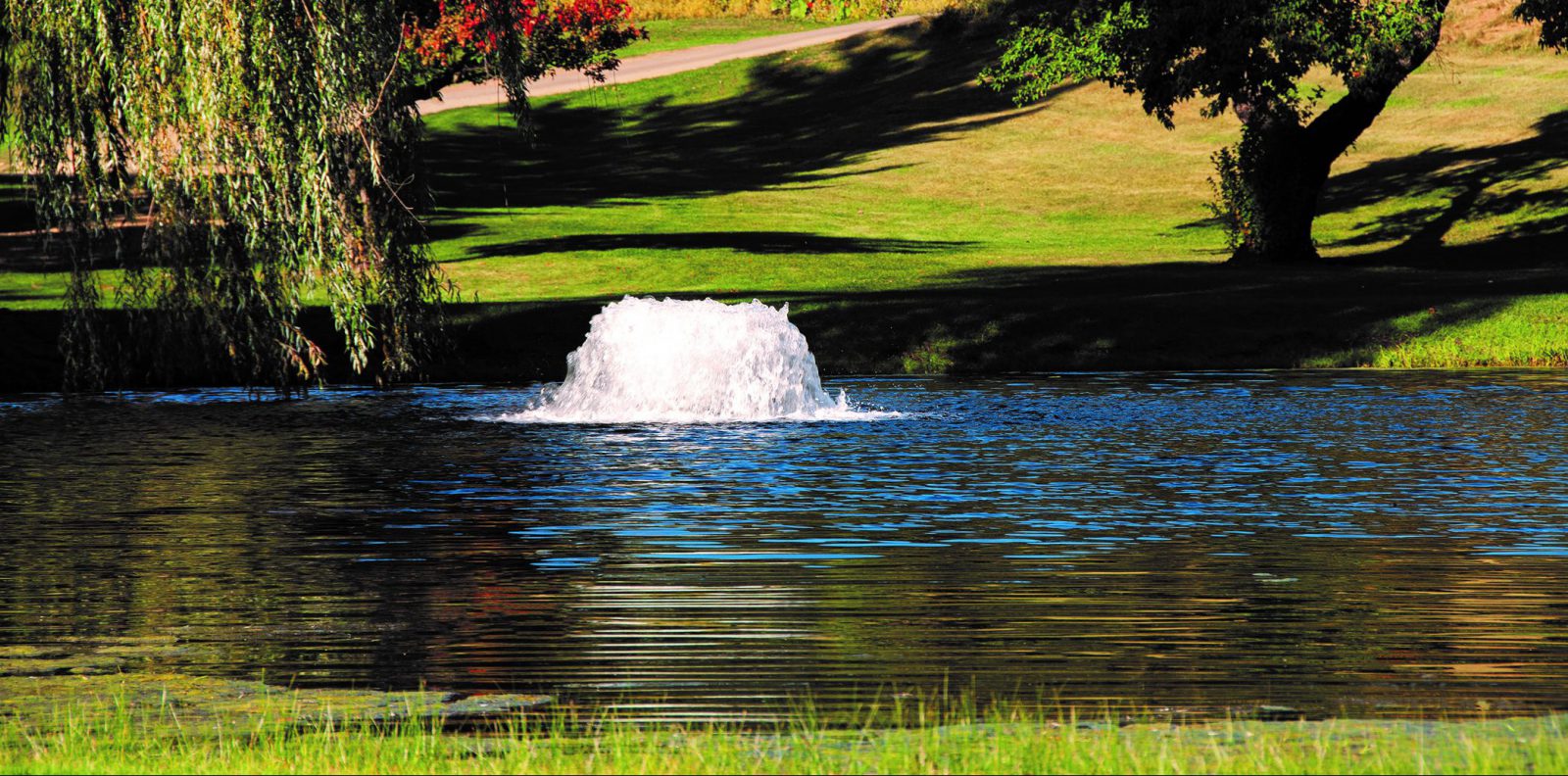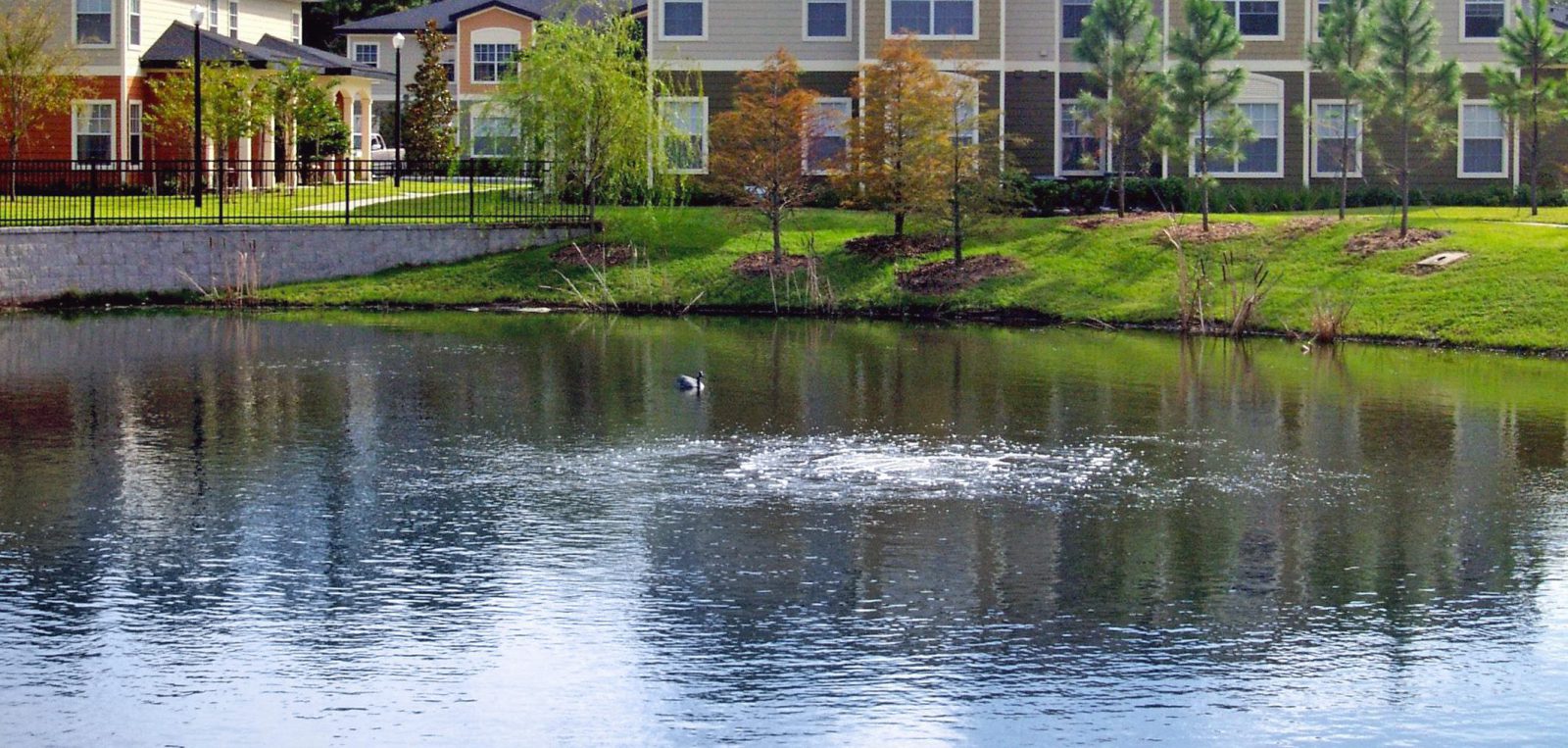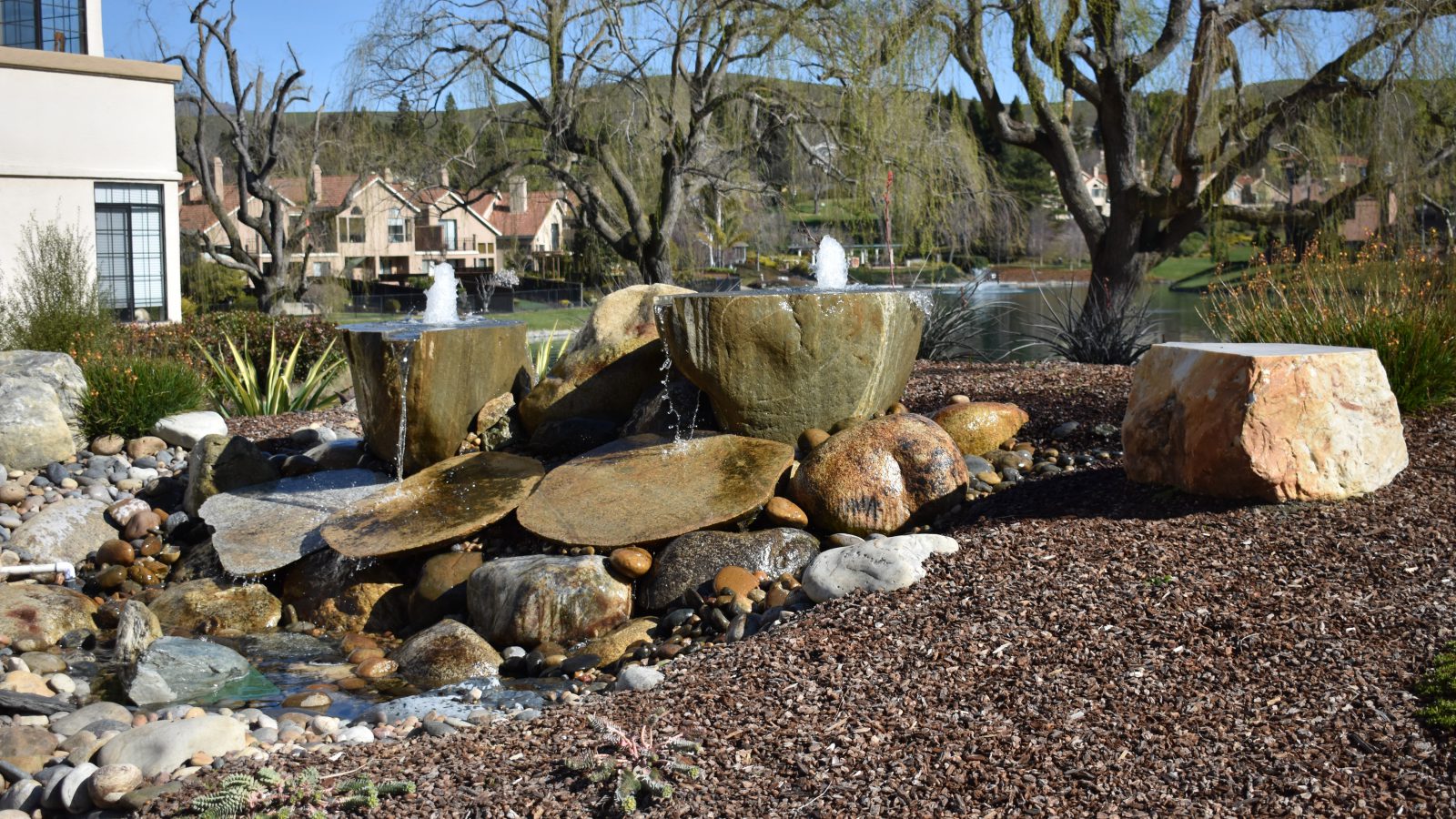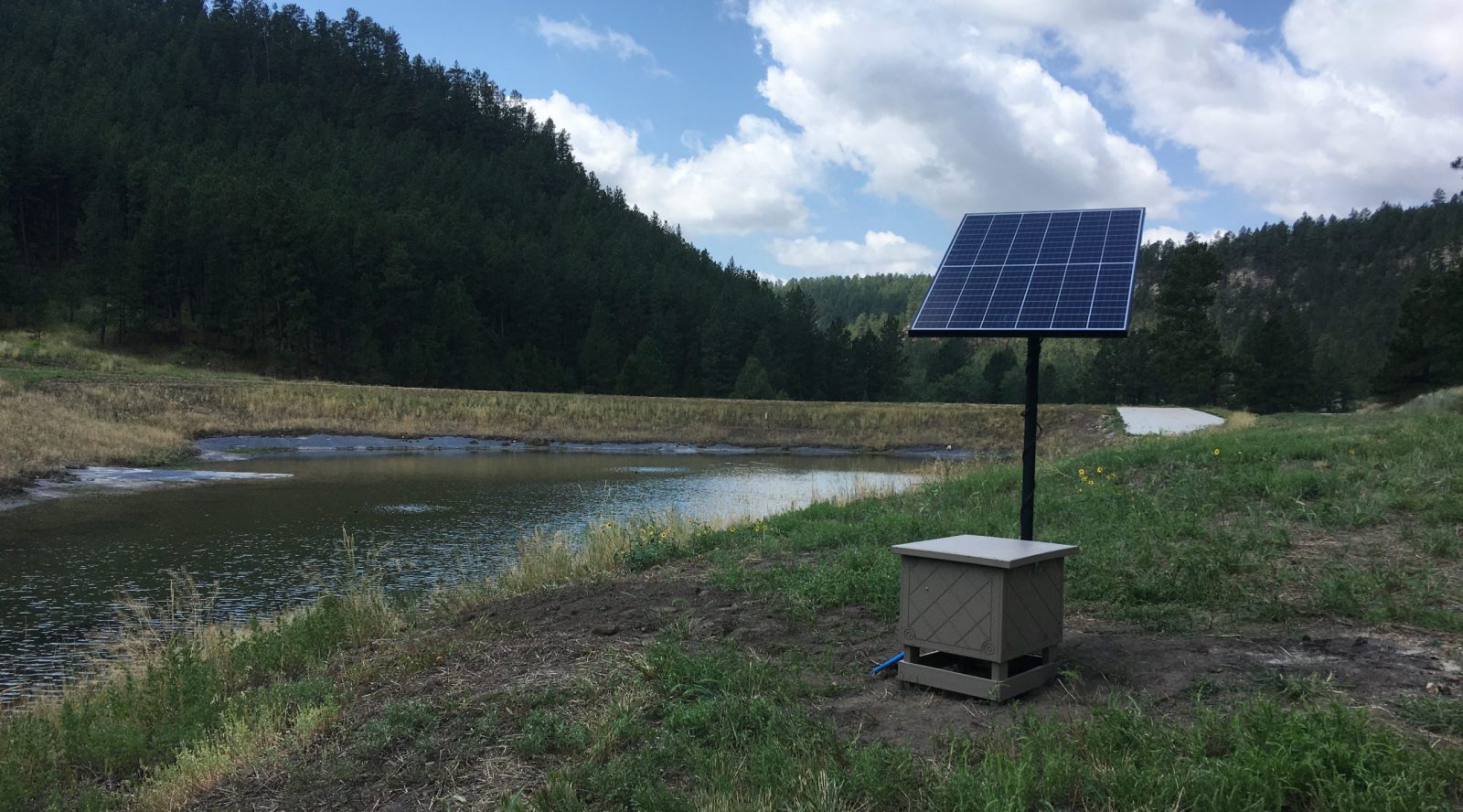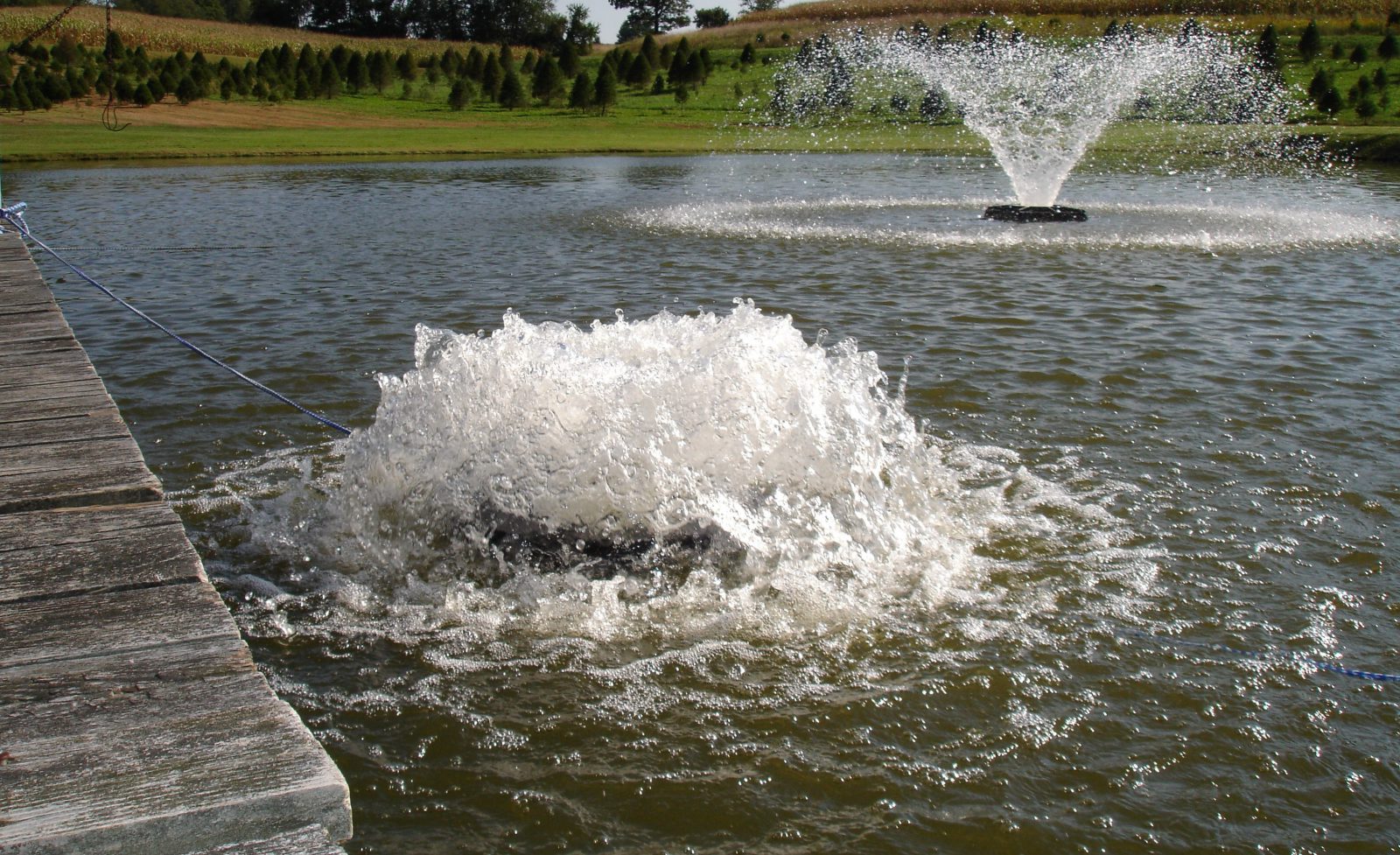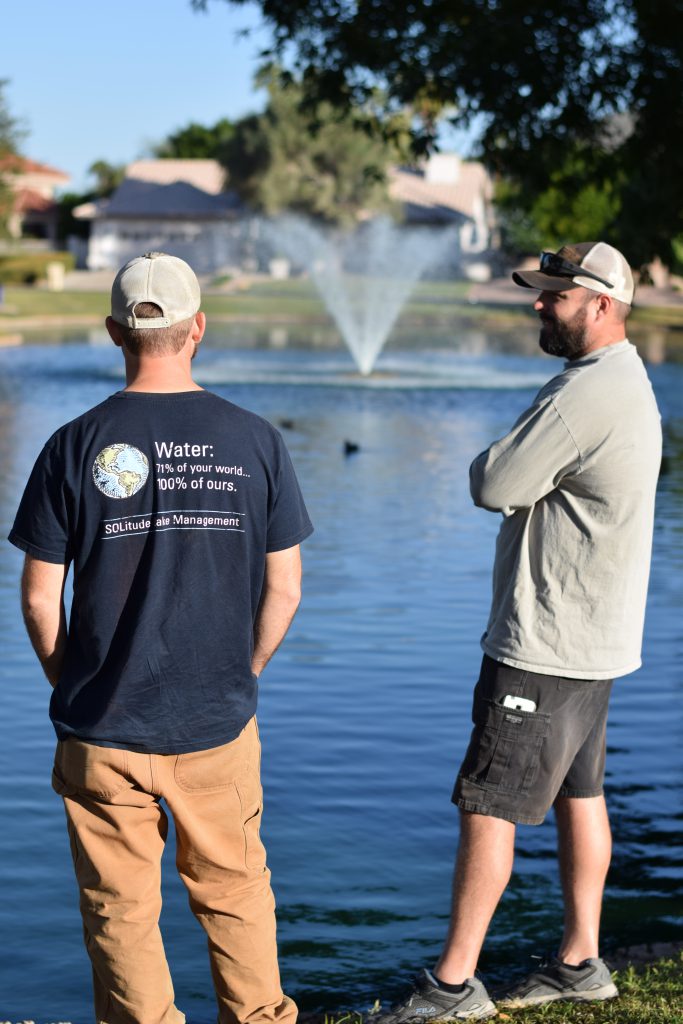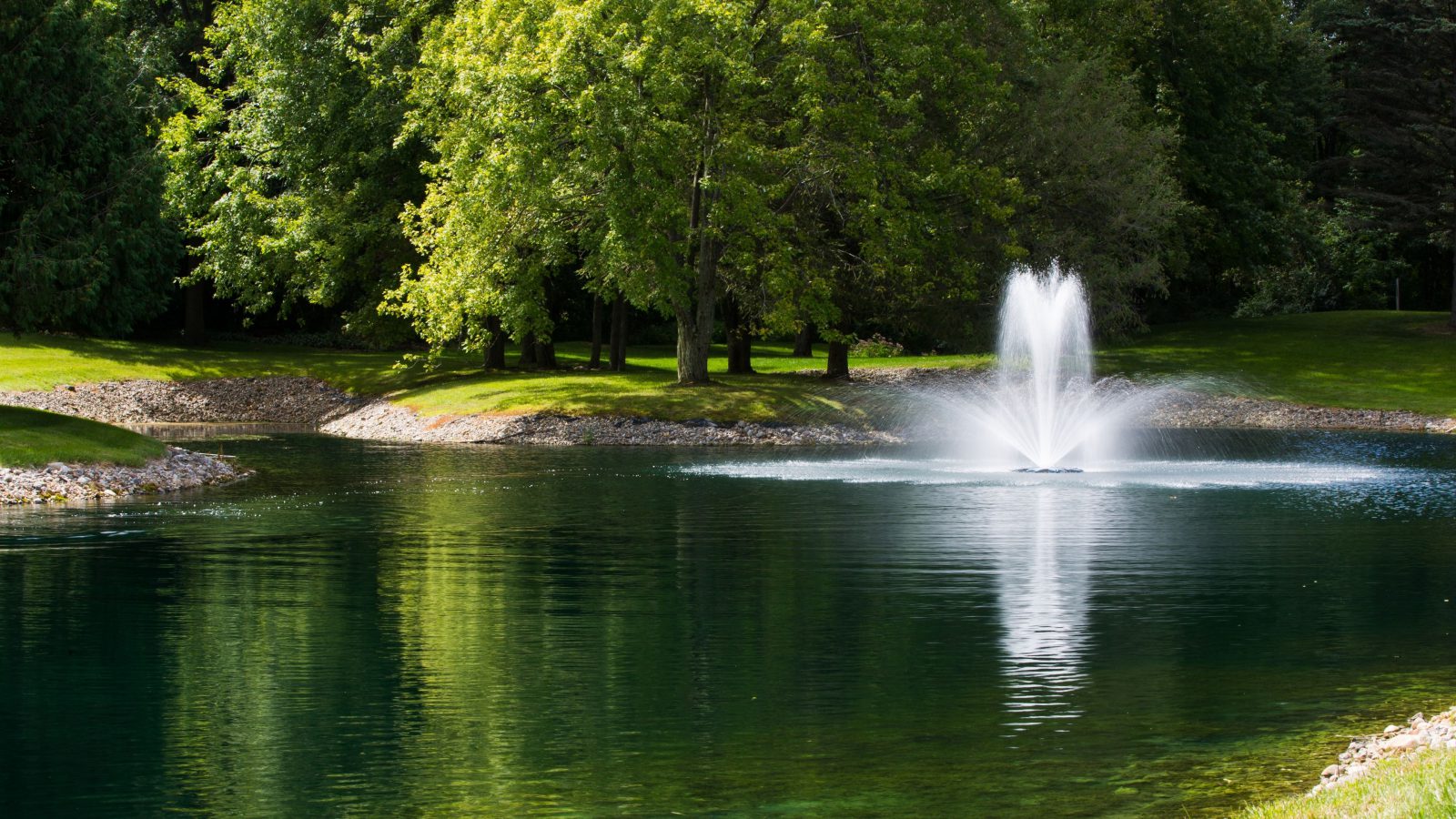
All About Aeration: Customized Lake and Pond Aeration Solutions for a Beautiful, Balanced Aquatic Ecosystem
Lakes and ponds have many different functions:
- Collect sediment and stormwater during rainstorms
- Create beautiful focal points for communities and property owners
- Supply essential drinking water
- Support agriculture and manufacturing
- Provide habitat for native beneficial species
- Operate as fishing spots for angling enthusiasts
- Serve as dynamic ecosystems for year-round enjoyment
But without proper management, our waterbodies can develop physical and chemical imbalances that manifest in many ways:
- Aquatic weeds
- Algae and toxic cyanobacteria
- Shoreline erosion
- Muck development
- Flooding
- Murkiness
- Foul odors
- Fish kills
Types of Aeration Systems
Aeration is one tool experts may recommend as part of a comprehensive pond maintenance plan. These systems are designed to circulate the water and transfer oxygen below the surface. Well-aerated waterbodies are less likely to develop imbalances that jeopardize the health and beauty of the ecosystem.
Depending on the unique goals and characteristics of the waterbody, a few types of aeration systems may be considered:
- Floating Fountains
- Surface Aerators
- Submersed Aerators
- Architectural Water Features
Floating Fountains
Shallow lakes and ponds can benefit from aerating fountains, which spray water into the air. Beneficial oxygenation occurs when the water splashes back down onto the pond, transferring surface air under the water while allowing submerged gases to escape.
Fountains are not just functional, they can elevate the aesthetic beauty of any property. Golf courses, community associations, universities, private homeowners, and other stakeholders can achieve a new level of elegance and sophistication that is unique to their property.
Floating fountains are available in a myriad of different sizes and spray patterns – and can even be paired with colorful lighting elements with remote access to ensure it remains a focal point after the sun goes down.
Surface Aerators
Stakeholders who do not have the budget or aesthetic need for floating fountains may choose a surface aerator. These low-profile systems typically turn over an even greater amount of water, but do not spray water high into the air and may not be equipped with lighting features. Surface aerators can be used in any waterbody, but are most impactful in smaller, shallow ponds.
Submersed Aeration
Submersed diffused air aeration systems can help oxygenate the lower depths that floating fountains can’t reach, particularly in deep lakes and ponds. Submersed aeration systems utilize a weather-protected on-shore compressor to pump air through subsurface tubing to submerged diffusers.
As the bubbles rise, they carry the low-oxygen water from the bottom toward the surface, where it mixes with the oxygen-rich surface water and attaches to atmospheric oxygen before sinking back to the bottom. The continuous vertical mixing helps to increase the dissolved oxygen concentration throughout the entire waterbody. Stakeholders can maximize the benefits of aeration by installing a submersed aerator directly below a floating fountain.
Architectural Water Features
Science proves that humans feel happier and more at peace when spending time around the water. Sometimes, stakeholders desire water features to simply enjoy the aesthetic beauty and mesmerizing movement. Many installations can be designed with ozone and ultraviolet light water sterilization to ensure public safety.
Architectural fountains, decorative waterfalls, and other custom-built water features can add unique character and charm to waterbodies of all shapes and sizes, as well as more urban areas like city centers, universities, or office parks. Architectural water features can be complex to install and may require extensive planning, engineering, and renovations, but once in place, they are often very simple to maintain. Because these features are custom-made, the design possibilities are endless!
No Electricity? No Problem.
The benefits of aeration are not just limited to lakes and ponds near electrical power sources. Solar-powered aeration systems facilitate the introduction of aeration to remote locations and can also serve as an eco-friendly alternative for those interested in reducing their environmental footprint.
While solar-powered aeration systems still utilize an on-shore compressor that pumps air to the depths of the waterbody, the source of power is naturally occurring sunlight. Premium systems also include a back-up battery that will help ensure the aeration system continues working when the wind isn’t blowing or the sun isn’t shining.
Finding the Perfect Fit & The Benefits
Aeration can generate many positive changes in your lake or pond, but to do so, your systems must be specifically sized for your waterbody. Inadequately sized aeration systems could push unhealthy water into areas with balanced water quality, creating undesirable conditions.
A professional will take into account the shape, various depths, and overall volume of the lake or pond to establish a customized aeration plan. They may also utilize depth-sensing technology, like bathymetry, to determine the appropriate sizing and placement for submersed and floating aeration systems.
The benefits of improved dissolved oxygen levels throughout the water column of a lake or pond are enormous:
- Inhibit the processes that facilitate organic growth
- Limit sediment build-up
- Prevent fish kills
- Interrupt mosquito reproduction
- Support a flourishing ecosystem
The Benefits of Aeration: Interrupt Nutrient Loading
Pond nutrients like phosphorus and nitrogen are necessary to sustain aquatic life, but an excess of nutrients can be detrimental to a waterbody. Excess nutrients and pollutants can enter a lake or pond in many ways. They are found in stormwater runoff, eroded sediment, animal waste, fertilizers, and decomposing leaves, branches, and plant material. As part of a comprehensive management program, professionals may pair an aeration system with different types of nutrient remediation solutions:
Lakes and ponds that suffer from ongoing nutrient loading are susceptible to nuisance organic growth. Anoxic conditions (lack of oxygen) can exacerbate these issues, as well as encourage anaerobic bacteria to produce ammonia and hydrogen sulfide, which are toxic to other organisms and may produce foul odors.
The circulation and dissolved oxygen benefits provided by fountains reverse anoxic conditions and convert nutrients to forms that do not negatively affect water quality. When water quality conditions are balanced, algae, aquatic weeds, and toxic cyanobacteria are less likely to develop – thus reducing the need for aquatic herbicides and algaecides.
The Benefits of Aeration: Prevent Fish Kills
Fish kills are a somewhat common phenomenon that, understandably, can be alarming to any property owner. A fish kill may occur for many reasons, but it’s typically following heavy rainfall, rapid fluctuations in weather temperature, or other natural events that cause sudden mixing of the warm, oxygen-rich layer of water at the surface of a waterbody with the colder, oxygen-depleted layer of water near the bottom.
Aeration systems proactively circulate the water column to introduce dissolved oxygen throughout and prevent stratification – so that when mixing eventually occurs, oxygen levels are not altered as significantly.
The Benefits of Aeration: Reduce Mosquitoes
Fountains can help naturally decrease mosquito activity by creating consistent water circulation. Mosquito larvae have a difficult time surviving in moving water, making it a deterrent to egg-bearing, disease-carrying mosquitoes. The waves, ripples, and overall circulation created by the lake and pond aeration system will help ensure that your waterbody does not become a breeding ground for these annoying pests.
The Benefits of Aeration: Support a Flourishing Ecosystem
Dissolved oxygen can help restore balanced pH levels and support other related water quality parameters that help improve the growth of fish, native organisms, and healthy green phytoplankton, which serve as the foundation of a healthy food chain.
The Benefits of Aeration: Year-Round Circulation
Lakes and ponds are not asleep during the winter. Winter aeration can be utilized 24/7 to help prevent your waterbody from freezing over and introduce oxygen to the water throughout the cold season. Aerating lakes and ponds as a management tool began as early as the 1950s and was initially used during the winter months to reduce ice accumulation and limit the probability of a winter fish kill. Later, the idea of aerating lakes to help manage the effects of erosion, nutrient runoff and other water quality parameters began to take off, but the original benefits hold true.
Floating fountains are extremely effective at circulating water during mild winters, and in regions that regularly experience frigid temperatures, submersed diffused aerators are an effective solution to prevent ice from forming at the water’s surface and throughout the water column.
Keeping the water’s surface open will also help facilitate the decomposition of Autumn leaves and materials without trapping dangerous gases. By reducing organic build-up, the waterbody can retain its original depth and volume for longer periods of time, prolonging the need for costly dredging.
Recurring Maintenance
Like most machines, aeration systems require some upkeep. Fountain manufacturers typically recommend an oil and seals change every 2-3 years to ensure it runs properly and will not leak. This helps minimize the need for repairs and will protect your investment well into the future.
In areas of the country that are prone to severe freezing, fountain equipment may need to be pulled from the water and stored during the winter months to prevent ice damage. This typically involves removing the fountain motor and float, sealing the underwater power cable disconnect, performing a detailed inspection, and cleaning of the unit.
One Piece of a Proactive Management Plan
Aeration is often the first solution recommended by lake and pond management professionals, but it’s never the last. The positive effects of aeration are reinforced when paired with other proactive strategies in a long-term management program:
- Water quality testing
- Nutrient remediation
- Buffer management
- Erosion control
- Mechanical harvesting
- Muck and sediment removal
The Benefits of Aeration
SOLitude Lake Management is a nationwide environmental firm committed to providing sustainable solutions that improve water quality, enhance beauty and preserve natural resources.
SOLitude’s team of aquatic scientists specializes in the development and execution of customized lake, stormwater pond, wetland and fisheries management programs. Services include water quality testing and restoration, algae and aquatic weed control, installation and maintenance of fountains and aeration systems, shoreline erosion control, muck and sediment removal and invasive species management. SOLitude partners with homeowners associations, golf courses, private landowners, businesses and municipalities. SOLitude Lake Management is part of Rentokil, a leading business services company, operating across the United States, Canada and Puerto Rico.
For more information, visit SOLitude Lake Management at solitudelakemanagement.com, and connect on Facebook, LinkedIn and Twitter.








